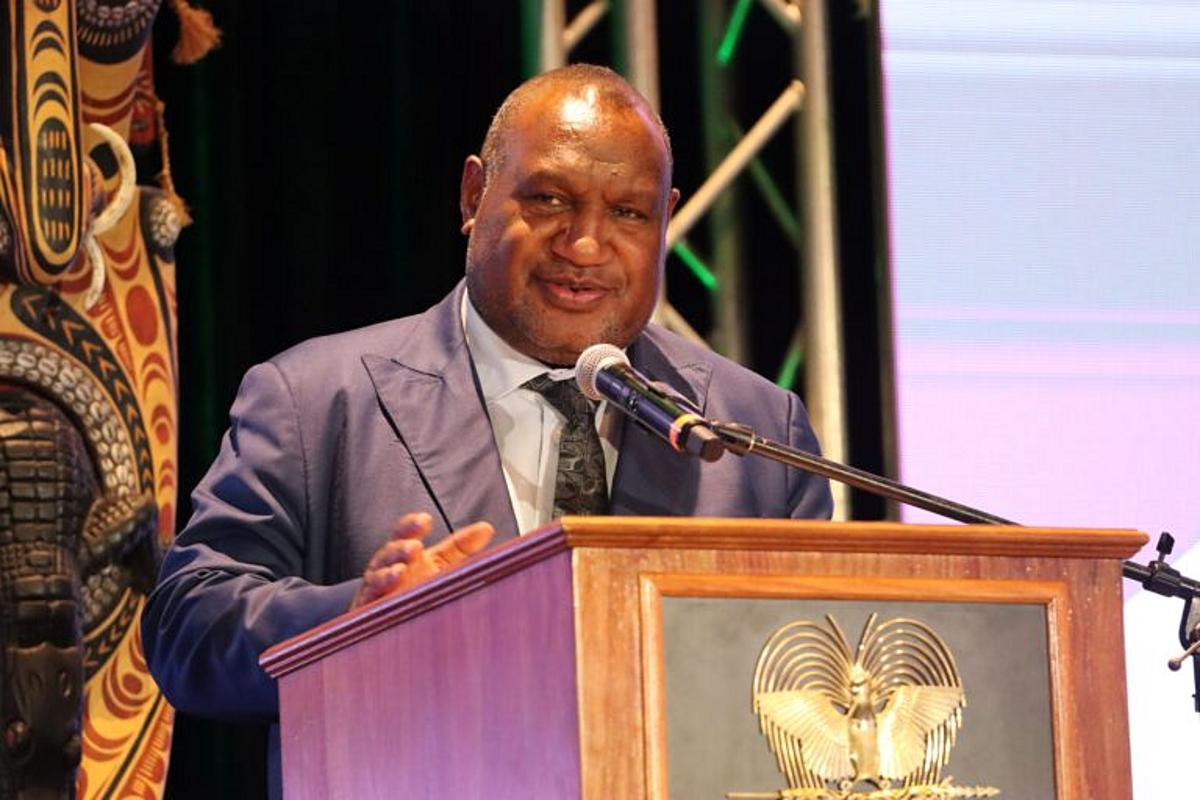According to an S&P Global Rating research update, measures introduced in the battle against the Covid-19 are likely to bring more pressure on PNG's government finances.
According to the study, the global pandemic has exacerbated PNG's systemic fiscal problems.
“Much weaker revenues, coupled with larger recurrent expenditure, are a feature of the fiscal landscape,” it said.
“Larger fiscal deficits and weak economic growth have propelled general government net debt, according to our calculations, to above 46.6 per cent of gross domestic product (GDP) in 2021.
“We forecast it to reach around 47.5 per cent in 2024 due to delays to the government’s fiscal consolidation efforts because of fallout from the Covid-19.
“It states that weaker tax revenues and dividends from State-owned corporations have substantially lowered revenue expectations since the start of the pandemic.
“On the expenditure side, significant overruns were incurred from a public sector wage bill because of increased wages and additional staff numbers.
“In response, the Government has cut capital expenditure, partially offsetting the weaker revenues.
“But this does not address vulnerabilities linked to PNG’s narrow tax base and it will continue to weigh on future growth.”
According to the study, the government started its staff-monitoring scheme with the International Monetary Fund in 2020, detailing its 20 institutional benchmarks.
“The incumbent government’s focus is on fiscal consolidation and lowering debt,” it said.
“We expect this focus to provide an anchor to the government’s economic and social reform agenda.
“Carrying out the agenda has been difficult because disruptions caused by the global pandemic have delayed targets. We estimate the general government deficits to average 3.3 per cent of GDP between 2021 and 2024.
“The 2020 fiscal deficit was higher than the Government had projected.
“The economic slowdown and low commodity prices led to lower revenue collections.
“Government expenditure, meanwhile, increased due to pandemic-related fiscal support.
“To mitigate some of the revenue shortfalls, the Government applied for additional Covid-19 financing facilities established by multilateral development partners.
“We expect multilateral and bilateral partner loans to finance fiscal deficits, with net debt increasing to about 46.6 per cent of GDP in 2021.”
The government has included debt from state-owned enterprises (SOEs) in its debt calculation, which is higher than our normal concept of general government debt, according to the study.
“A lack of disclosure means we are unable to separate the debt of SOEs from that of the general government,” it said.
“The Government continues to increase its reliance on external borrowing, with its debt strategy targeting a 50:50 split between domestic and external financing.
“Wider fiscal deficits in recent years have strained the ability of the domestic financial system to absorb large amounts of government debt, which is reflected in higher local interest rates.
“PNG has diversified its funding base via drawdowns from a Credit Suisse, Asian Development Bank, and World Bank credit facilities budget support loan from Australia as well as its US$500 million (K1.7bil) sovereign bond issuance.
“The Government has used some of these proceeds to retire short-term expensive domestic debt, lowering its average cost of debt domestically.
“We anticipate interest payments to rise as debt stock increases to about 23 per cent of general government revenues by 2024.
“PNG’s external position remains weak.
“The country’s terms of trade volatility have subsided over the past few years.
“External debt ballooned between 2010 and 2013 during the construction phase of a liquid natural gas project.
“Large current account deficits – financed by a combination of external debt and foreign direct investment – averaged about 30 per cent of GDP.
“The country’s external imbalances have contracted during the past few years, with LNG production since 2014 resulting in repayment of external liabilities.
“Future LNG projects could exacerbate external imbalances again during the construction phase.
“We project a moderation in current account surpluses in 2023-2024, rather than the double-digit current account deficits of 2010-2013.
“We forecast net external debt to be about 124 per cent of current account receipts (CARs) in 2021.”
PNG's net external debt stood at 370 per cent of CARs in 2012, according to the study update.
“We consider PNG’s strong current account surpluses to overstate its external position,” the report said.
“Project development agreements allow developers of mining projects to keep export receipts in offshore foreign currency accounts.
“These US dollar revenues deflate our external ratios, presenting a stronger external picture than would otherwise be the case.
“We expect net external debt to peak at about 250 per cent of CARs in 2024.”
Foreign exchange reserves have been stable over the past 12 months, remaining at about US$2.3 billion (K7.97bil) as of June 2020, according to the study.
“PNG held about US$4.4 billion (K15.26bil) in international reserves in 2011, declining to US$1.7 billion (K5.89bil) in 2017,” it said.
“This has also resulted in an easing of the shortage in US dollars in PNG, helping to lower the value and shorten the clearing time of outstanding foreign exchange orders.
“However, we believe PNG maintains extensive foreign-exchange restrictions.
“This is symptomatic of a currency that persists above the market-clearing exchange rate.
PNG’s exchange rate arrangements were “crawl-like”, according to the International Monetary Fund.
“During the past few years, the PNG Kina has depreciated against the US dollar, falling around 15 per cent since 2015,” the report said.
“More broadly, the Bank of PNG’s weak monetary policy flexibility is a rating constraint.
“This weakness mainly reflects the limited transmission of monetary policy settings to the interest rates faced by borrowers, largely because of the high level of liquidity in the banking system.
“PNG’s banking system is stable, with limited competition.
“It relies heavily on deposit funding, which is supported by high levels of liquidity. It also has a small net external asset position and limited linkages to global markets.
“That said, the country’s low-income levels and credit concentrations increase banking system risks.
“Legal infrastructure and judicial system delays also pose challenges to enforcing creditor rights.”










